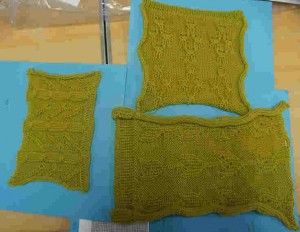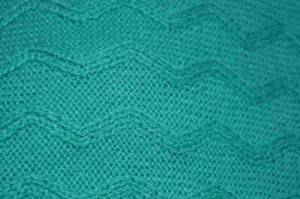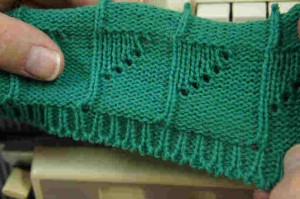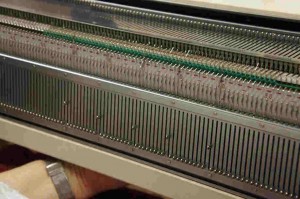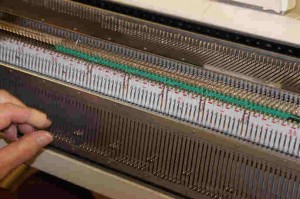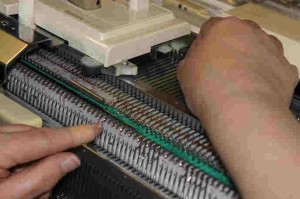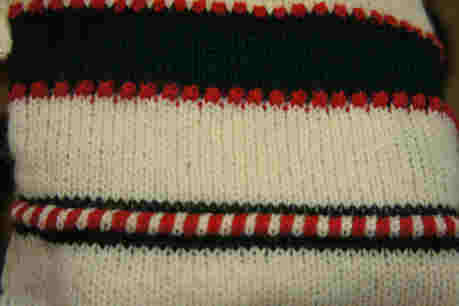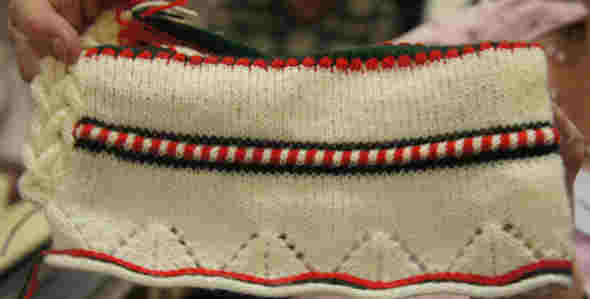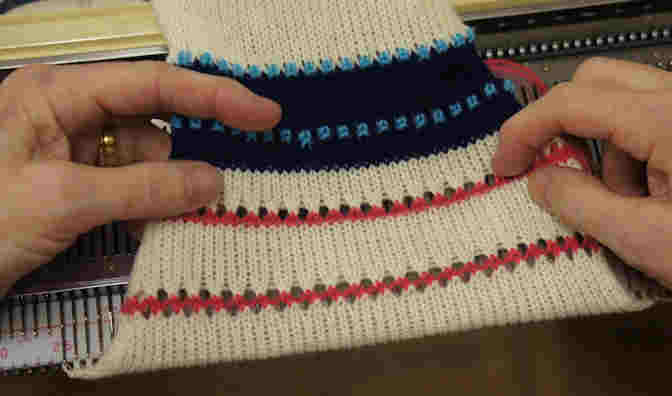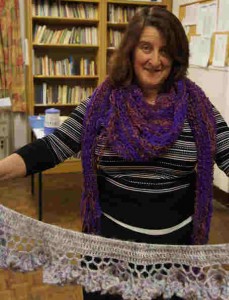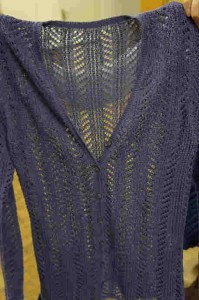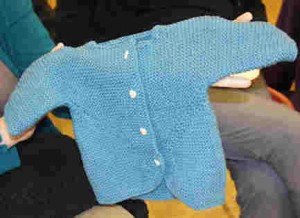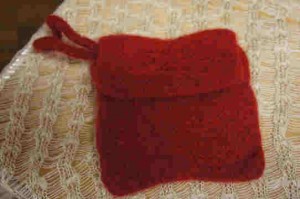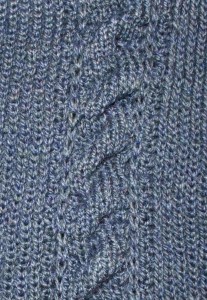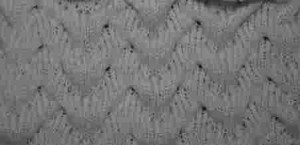November 14th Club evening and exhibition of
Charity Knitting for the Royal Marsden Hospital.
Raffle.
Category: The Club
what where and when
October 10th Speaker: Ann Brown talking about Pattern Calculations.
October 10th Speaker: Ann Brown talking about
Pattern Calculations.
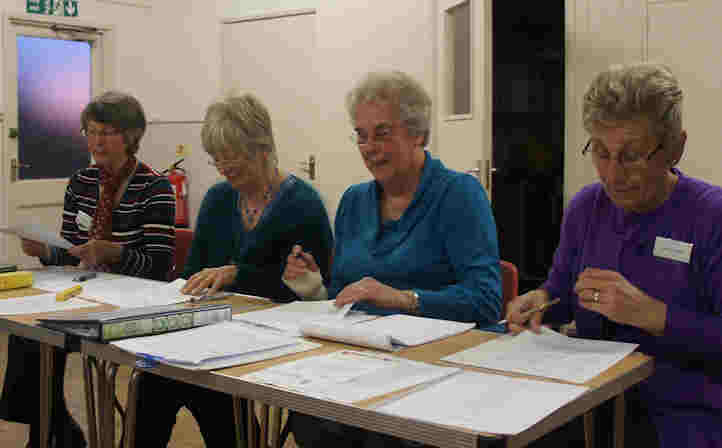
April 2012 Meeting
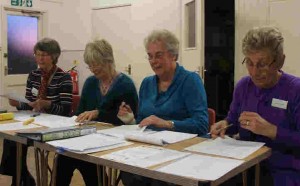
This meeting started with the AGM, a new committee was elected including a new Chairman – Kathy who took over the role from Brenda. We would all like to thank Brenda for doing such a sterling job for the last 10 years, she has been inspirational and her breadth and depth of knowledge will be missed by the committee. She will of course continue her membership of the club and so we will still be able to benefit from her experience. We wish her every success in the future.
After the AGM, the speaker was Liz Holness Chairman of the Guild of Machine Knitters and Fleet Knitting Club in Hampshire.
She talked to us about using the ribber for more than just welts and cuffs. It was an extremely useful session, Liz passed around some samples she had made and showed us some garments including some lacy stoles that had been made on a Knitmaster machine in around 2 hours. These were made in a variety of yarns, both natural and man-made. They draped beautifully. The original pattern had been created by our chairman Brenda and exhibited on the Guild’s stand at various exhibitions.
Then gave us a demonstration of how to adjust the ribber on her Brother machine so that it was correctly lined up and the gap between the beds was the ideal one.
An interesting demonstration of a simple rib pattern showed us how to create a patterned fabric simply by putting needles in and out of work on the ribber. The pattern has a vertical line throughout using one needle on the ribber – spaced out as you choose, then after a few rows a second needle is introduced adjacent to the first, then a few more rows then a third needle is introduced – this is repeated until a triangle is formed. All ribber stitched, except the one on the original needles are transferred to the main bed and the ribber needles returned to NWP. This is repeated across the width of the garment and up the garment – to give a pleasing pattern.
|
|
|
|
|
Liz also talked about getting machine knitting better known, especially amongst the new generation of hand knitters. Many people come into machine knitting from hand knitting when they find they want to expand their craft skills, develop their skills into a business or have less time to make garments, so recently Liz published an article in a knitting magazine. She has been manning the Guild’s stand at a range of exhibitions throughout the country and has also made an appearance on the TV channel http://www.knit1.tv/
Club evening. Yvonne Gale with more ideas about crochet.
September 12th Club evening. Yvonne Gale with
more ideas about crochet. Raffle.
Summer social evening – pub supper – UPDATE
August 8th Summer social evening. Pub Supper.
at a local pub- the Star Chessington Road, Leatherhead, KT22 0DP
Please come around 7:30 for 8:00pm
Speaker: Linda Newington, Archivist of the Knitting Pattern Archive at Winchester University
July 11th Speaker: Linda Newington, Archivist
of the Knitting Pattern Archive at Winchester
University will talk about the history of knitting
patterns.
Speaker: Beryl Jarvis will give one of her informative talks.
Speaker: Beryl Jarvis will give one of her informative talks.
Speaker: April Hardman will talk about Cut & Sew.
Speaker: April Hardman will talk about Cut & Sew.
March 2012 Meeting
After the usual notices the April meeting was discussed – this is the Annual General Meeting and will start at 7:45. This year our current chairman is retiring so a new chairman will need to be elected. After the AGM, we will have Liz Holness the chair of the Guild of Machine Knitters to speak to us.
This month Frances Perkins, a talented member of the club, gave a talk and demonstration on Stripes and how to create various different and unusual effects.
She brought along some samples and showed us how to create the various looks using a range of techniques that could be recreated on most machines.
| This shows many of the techniques in one sample.The dark green stripe has an interesting red edge with a row of holes on both sides – this is done either with a lace carriage or by hand transfer.The red and cream raised stripe with the dark edges was made using a simple fairisle pattern and picking up the first row of the fairisle to create the raised area. | |
| The bottom of this sample is done by using a latch tool to create rows of colour on the right side – it requires patience to create a latch tool (or crocheted) caste on row behind the work after casting on in the main colour using a latch tool caste on.The slightly wavy edge is created using a few rows of transfer lace. | |
| The two tone blue strip uses a tuck stitch pattern rather than fairisle. |
After the usual refreshment break, several people brought their newest knits for us to admire.
| summary here | |
| Dawn had been very busy hand knitting scarves this month | |
| Clare also made more than one item, here is her summery lace cardigan | |
| For cooler days, Clare created this lovely garter stitch cardigan. | |
| A pretty Baby’s Cardigan | |
| A pretty red handbag was shown by one member. |
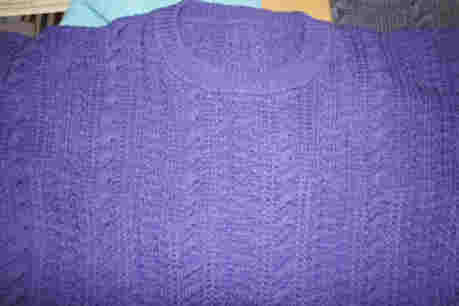
February 2012 Meeting
| Brenda and Tricia gave a talk to the club about magic cables. They brought along lots of examples and samples to show everybody, as well as several garments which were passed around for all to see close up. The club machine was set up and some members used the punchcards and experimented with the technique. |

| Traditional cables are made by removing two groups of stitches and swopping their position on the needle bed. Depending on the number of cables in one row this can be a laborious task. Magic cables are made by using a punchcard (or similar method for your type of machine). The pattern function that is used is tuck stitch, this places a loop of yarn over the needle to be tucked and builds this up over several rows. Subsequently, these are released with a knit row. After several rows of plain knitting you pick up the group of loops and place them on a needle to the left or right depending on the direction of the cable.This creates a sculptured fabric that has wonderful texture and is very similar to cabled fabric. In some instances there may be lots of loops and you will need to check that these remain on the needles. Weighting the work well will assist with this.
|
| I believe the originator of the style is Rikki Mundstock and there are patterns to be had, probably the best source now would be eBay or Amazon. You may be lucky and find some in your favourite retail outlet. |
| Brenda and Tricia both agreed that all the instructions needed to be read thoroughly before you commence knitting. In order that you understand the sequence and the evolving pattern. You would, of course, need to knit a tension swatch too. As Rikki is American, and as these patterns were written some time ago you may not be able to find the yarn used, replicating the tension is therefore essential for accuracy. |
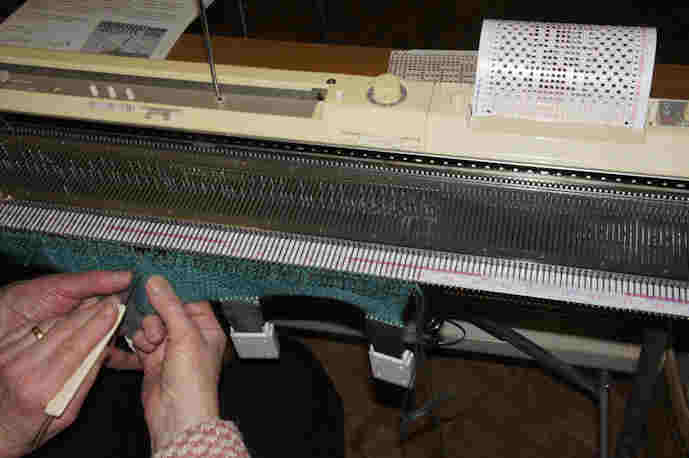
After refreshments, April & Lyn kindly showed a film about the making of the knitted boat that was exhibited at Alexandra Palace in 2010 during the annual knitting exhibition there. It was extremely interesting and everyone enjoyed seeing how members of a community, knitters and boat builders worked together to create an original piece of art.
If this wasn’t enough, we had the opportunity to buy extra bits and pieces for our machine from one of our members who sadly has had to give up machine knitting.

